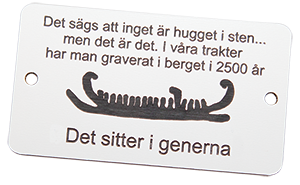Marked by the coast

At that time it was only the so-called than signs marking which was available; both parties marking and cable identification. Where he noted that it was terrible lot of time to torque rating.
The hourly rate for an offshore fitter was, at that time, around SEK 8-900/hour or SEK 13-15/minute. This made for very expensive marking, all costs included. Today we usually use a rate of SEK 8/minute for a normal electrician in Sweden. The time costs are perhaps not visible, but can be much higher than the cost of the product itself.
We eventually realized that it was time to develop our own products, as we were not satisfied with the products available on the market . We set the requirement that each marking strip (cable or part-marking) is to remain attached to the card until the fitter needs it. The material was to be halogen-free and resistant to heat, cold and UV radiation. The fact that the printout is not in a continuous strip is also a big advantage. Otherwise, if they are not connected in the right order, the marking sequencing is lost and you have to spend time looking for the marking you need in the resulting chaos.




